German Horror Movies: The Best Scary Movies Made in Germany
When it comes to horror movies, German cinema has been tremendously influential. Read on for a list and analysis of notable German horror movies.
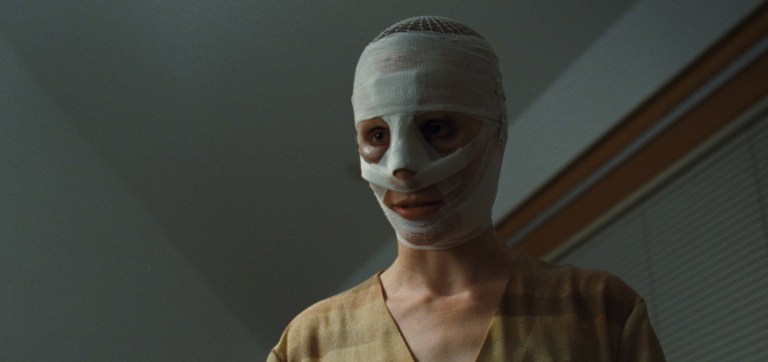
Table of Contents
When it comes to horror movies, German cinema has been tremendously influential. From 1920 until the present—except for a huge gap that began with the Nazi regime in 1933 and ended in the early 1970s—German films have played a prominent role in world cinematic history.

When the Third Reich was established in 1933, the Nazi government assumed complete control of the film industry, banning all content that didn’t serve their propaganda purposes, demanding “realism” over fantasy, requiring prior approval of all scripts, and the complete banishment of Jews from filmmaking, restrictions which sent a huge quotient of German filmmakers and actors fleeing for other countries. German film luminaries such as Fritz Lang and Billy Wilder fled to the USA to enjoy profitable careers. Many popular Universal Horror movies from the 1930s were directed by German emigres.
Others weren’t so lucky; actor/director Kurt Gerron died in a concentration camp. Only one horror movie was made under the Nazi regime: the unremarkable The Student of Prague (Der Student von Prag, 1935), which involves a handsome young man who sells his soul to win the lady of his dreams.
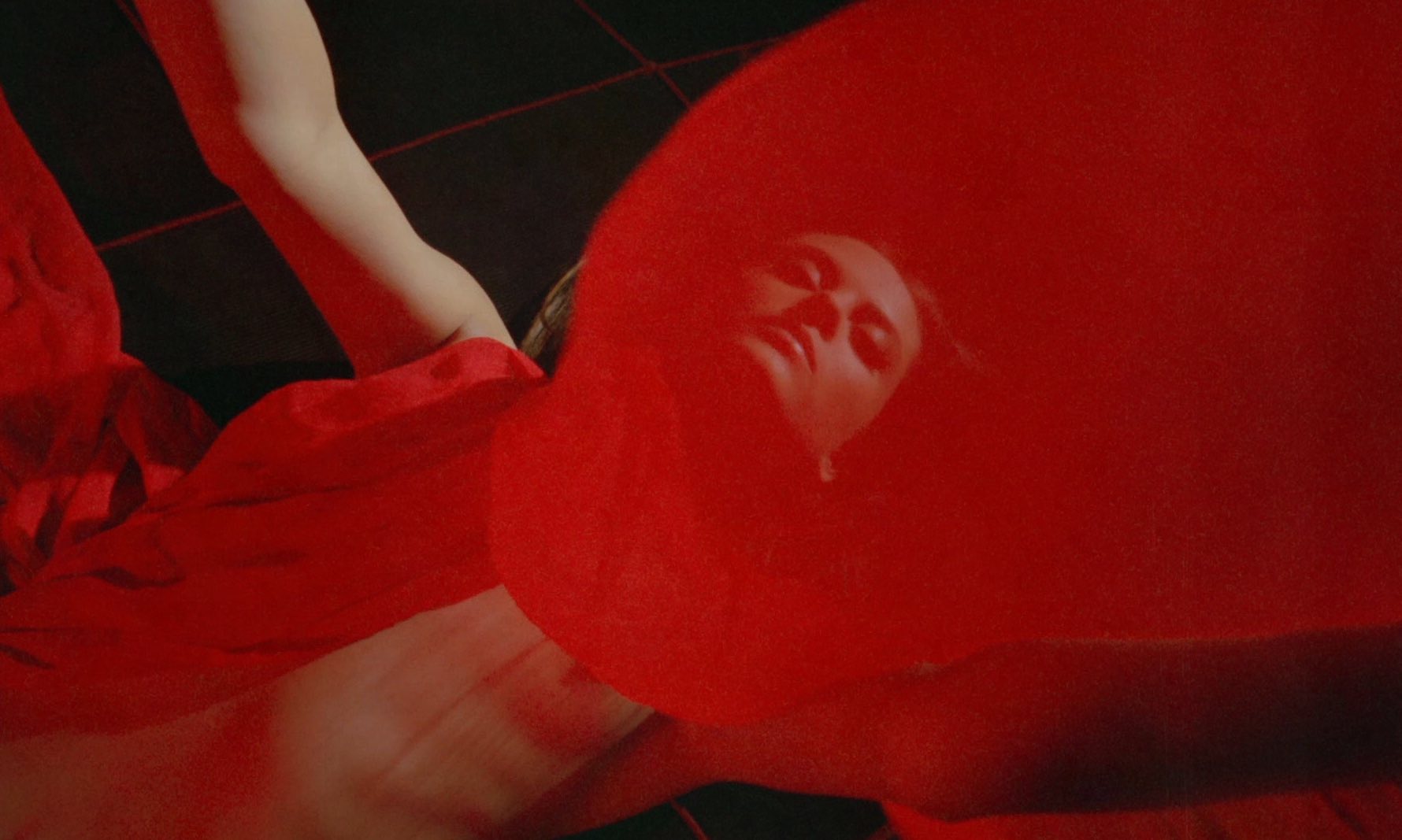
There were almost no horror films in West Germany post-WWII because the Germans had already seen enough horror. There were a handful in the 1950s, and the industry began kicking to life again in the 1960s. Several exploitation-style German horror films from the 1970s are included below. But it wasn’t until the 1980s and the advent of directors such as Jorg Buttgereit (NEKRomantik I and II) that a robust splatter industry emerged in Germany. The industry kept growing from then onward, with the years 2015-2017 being especially notable for German horror films that received international acclaim.
Here, then, is a guide to and analysis of notable German horror films from 1920 to the present, which you can stream on Netflix, Hulu, or buy on blu-ray.
The Best German Horror Movies
The Cabinet of Dr. Caligari (1920)

The Cabinet of Dr. Caligari, (German: Das Cabinet des Dr. Caligari) is a silent movie and a key influence to German expressionist cinema. Directed by Robert Wiene and written by two pacifists named Carl Mayer and Hans Janowitz, Caligari is considered the apex of German Expressionist cinema. The sets were painted rather than natural, and they evoke wild waves and angles and shadows that give the entire project a disturbingly dreamlike quality. The plot involves a hypnotist (Caligari, played by Werner Krauss), who uses a sleepwalker (Cesare, portrayed by Conrad Veidt) to kill people. Hans Janowitz said he got the idea after being at a carnival one day and spotting a creepy man lurking in the shadows, only to find the next day that a little girl had been murdered.
Although years later the screenwriters would claim that their film was a statement against authoritarianism, there is no evidence that they said any such thing while making the film or in the years that directly followed. At its premiere in both Germany and New York, audiences booed and demanded their money back, but now it’s considered one of the greatest and most influential films ever made of any genre. Film critic Roger Ebert called it “the first true horror film.”
The Golem (1920)

An Expressionist classic in the vein of Dr. Caligari, the film’s German title was Der Golem, wie er in die Welt kam (The Golem: How He Came Into the World). The plot retells an actual Jewish folk myth from Prague in the 1600s when the Holy Roman Emperor was severely oppressing the inhabitants of the Jewish minority ghetto. The title character is a giant man of stone who is lifeless until he is summoned to life by a rabbi to save the Jewish community.

Watch for the intensely surreal special effects as the astronomer/rabbi summons the Golem to life—an amazing technical feat for 1920. The rabbi brings the living Golem to the royal palace, whose denizens are dazzled by the Golem’s magical feats, and the pair return to the Jewish ghetto announcing that the community has been spared. But then the astronomer realizes that a demon named Astaroth is due to possess the Golem, so he devises a spell to cast the demon out. The Golem returns to his peaceful demeanor, but before he can go rogue again, the rabbi removes the magical amulet from his forehead, causing him to collapse. With the Emperor appeased and the Golem no longer a threat to anyone, the Jewish community rejoices as a Star of David fills the screen at the end.
Nosferatu (1922)

The first true Dracula film—Bela Lugosi’s Dracula would come nine years later—Nosferatu is based directly on the 1897 Bram Stoker novel Dracula with a few key elements switched around to avoid prosecution for copyright infringement. For example, Count Dracula becomes Count Orlok, the word “nosferatu” is used instead of “vampire,” and the bloodsucking in this film kills people instead of turning them into vampires.

But the film’s true standout is the terrifying appearance of actor Max Schreck as Nosferatu—completely bald (very, very rare in those days), rail-thin, hunched back, hooked nose, and long fingernails. Perhaps scariest is that he blinks only once throughout the entire film. Some critics suspected Count Orlok was an anti-Semitic stereotype, but director F. W. Murnau was known to be uncharacteristically friendly to Jewish people for a German of his era. The film was considered to be so terrifying that Sweden banned it until 1972, a full fifty years after its release.
The Hands of Orlac (1924)

The Hands of Orlac brings director Robert Weine and actor Conrad Veidt back together after Dr. Caligari to tell the tale of a concert pianist who loses his hands in a railroad accident, only to have them replaced with a murderer’s hands. He soon finds himself with an overwhelming desire to kill. Since his new hands aren’t able to play the piano, Orlac becomes financially destitute and emotionally desperate. His luck plummets into the abyss when someone else uses wax to transfer fingerprints from the murderer’s hands onto rubber gloves and stabs someone to death while wearing the gloves. Teens in Austria and Germany were prohibited from seeing the movie not due to any adult content, but because of its violent, disturbing nature. Shortly after the film’s release, Berlin authorities banned the film for a short time, claiming that criminals would be able to use the wax-fingerprint method to get away with crimes, even though that method doesn’t work outside of the movies.
M: Eine Stadt sucht einen Mörder (1931)

Released in the USA simply as M, the full German title translates as M: A City Searches for a Murderer. This is famed director Fritz Lang’s first sound film, and he says he considers it the best film he ever made because it tells a tale of social responsibility. It involves a child killer (hauntingly played by bug-eyed Peter Lorre, who, along with Lang, would soon flee Nazi Germany for a successful American film career) who obsessively whistles the melody to Edvard Grieg’s “In the Hall of the Mountain King” to the point where whenever you hear the melody, you know the killer is near. When a blind man recognizes the whistling, he tells a sighted person, who walks up behind the killer and softly places an “M” in white chalk on the back of his overcoat, marking him for capture.
Local police crack down so hard on local crime syndicates in their quest to find the killer that the criminals organize and hunt him down themselves, holding a mock trial and finding him guilty. Right before the mob of crooks kills him, the police break in and haul him off to a real trial. Lang actually used several real criminals in the movie to portray the Berlin underworld—and in an ironic twist of fate, 25 of them were arrested by the real-world police during the filming.
Vampyr (1932)

This dreamy, intentionally washed-out-looking 1932 surrealistic classic was filmed with the actors silently mouthing their lines in three different languages—French, German, and English—because director Carl Theodor Dreyer wanted to release three different versions. Voiceover actors subsequently dubbed in the lines after filming was completed, although no English version has ever been released. The full German title is Vampyr – Der Traum des Allan Gray (Vampyr: The Dream of Allan Gray), and the plot involves a young German occultist who falls under a vampire’s spell in a small village. To achieve the dreamlike look, the director filmed all scenes with his camera placed three feet behind a piece of gauze. One scene—involving a doctor who hides in a chamber, only to be slowly suffocated to death as flour falls on him from the mill above—was so disturbing that German censors asked that it be altered. Vampyr was poorly received initially but over the years has been recognized as a horror classic. According to Dreyer, “I just wanted to make a film different from all other films. I wanted, if you will, to break new ground for the cinema.”
The Testament of Dr. Mabuse (1933)

The basic plot involves a criminal genius who gives orders to his underlings while he’s confined in an asylum, then continues giving orders as a ghost after he dies. The subtext is that the Dr. Mabuse character was intended as a proxy for Adolf Hitler. Released in Germany as Das Testament des Dr. Mabuse, this offering from Fritz Lang is simultaneously the last great film of the Weimar Republic and the first anti-Nazi film made in Germany. Lang made this—his second in what would be a trilogy of Dr. Mabuse films—while Hitler was still a rising force but had yet to completely seize power. “The film was made as an allegory to show Hitler’s processes of terrorism,” Lang later explained. “Slogans and doctrines of the Third Reich have been put into the mouths of criminals in the film.”

After Hitler became Chancellor and made Joseph Goebbels his Minister of Propaganda, Goebbels stated that he admired Lang’s style and hoped to use his skills to promote the Third Reich. At his home, Goebbels privately screened Dr. Mabuse with Lang and other German filmmakers attending. But Goebbels banned it after the screening, claiming that it “showed that an extremely dedicated group of people are perfectly capable of overthrowing any state with violence” and stating that it might “incite people to anti-social behavior and terrorism against the State.” Lang soon fled Germany, and the German-language version premiered in Budapest, Hungary, in April 1933. He had also filmed a French-language version using French actors on the same sets he’d used for the German version. It was released in France as Le Testament du Dr. Mabuse. Christopher Nolan, director of 2008’s The Dark Knight, claims that he made his brother Jonah watch The Testament of Dr. Mabuse prior to writing the character that would become Heath Ledger’s Joker.
Horrors of Spider Island (1960)
A West German take on the Cold War due to the fact that Spider Island is rich with uranium but infested with radioactive spiders, this low-budget softcore exploitation film involves a group of New York City strippers who are flying to a gig in Singapore, only to crash on a remote island but miraculously survive. Gary, the strip-club manager, wanders out into the jungle and is bitten by a giant spider, turning him into a violent lunatic who winds up killing one of the girls, unbeknownst to the others. After fours weeks pass and food supplies are dwindling, two men disembark from a ship with food intended for a professor who, unbeknownst to them, had died from a radioactive spider bite. That night while everyone is waiting for the ship’s return, they throw a raucous celebration party. As a couple sneaks away to fornicate, Gary kills them. The rest of the group realizes now that Gary also killed the girl and chase him with torches until he falls and drowns in quicksand—but not before he releases more radioactive spider eggs on the island. This was released in Germany as Ein Toter hing im Netz (A Corpse Hung in the Web). It was also released in English under four additional titles: Hot in Paradise, It’s Hot in Paradise, Spider’s Web, and Girls of Spider Island. Critics save savaged the film for its poor quality, although Wikipedia says it has an “inept charm.”
Jonathan (1970)

A post-WWII German film whose unique twist is that it casts vampires as an entire class of wealthy fascist aristocrats who rule the country and routinely suck the blood from every human and animal under their dominion. It is set in rural Germany in the 1800s, where a group of peasants, led by a “vampire researcher,” select a heroic young man named Jonathan to track down and kill the alpha vampire—whose name is only Count—which they believe will lead to a revolution and the overthrow of the entire vampire regime. It was released in West Germany in May of 1970 and earned director Hans W. Geißendörfer a Gold Film Award for Best New Direction at the Deutscher Filmpreis.
Mark of the Devil (1970)

Released in Germany as Hexen bis aufs Blut gequält (Witches Tortured till They Bleed), the film’s production company earned international attention with marketing schemes such as providing “barf bags” for theatergoers and describing the movie as “Positively the most horrifying film ever made,” “Rated V for Violence,” and “Guaranteed to Make You Sick.” Set in the early 1700s in Austria, a witch hunter’s apprentice (Udo Kier) realizes his job is a fraud when he observes his boss (Herbert Lom) strangling a man to death for accusing him of being impotent.

This leads to an uprising among the common folk, but along the way the audience is subjected to endless beatings, whippings, dismemberment, rape, and a woman’s tongue being ripped from her throat with metal pincers. The extreme and graphic violence—referred to by the Aurum Film Encyclopedia: Horror as “grotesquely sadistic”—led to temporary bans in England and Germany. A sequel, Mark of the Devil II, was released in 1973.
Vampyros Lesbos (1971)
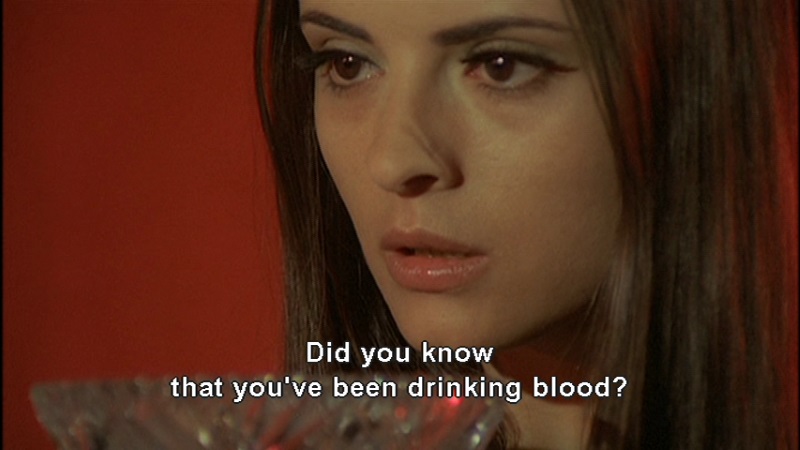
A collaborative Spanish/German production from Jess Franco—described by the Vatican as “the most dangerous director in the world”—this mix of softcore porn and vampire horror centers around a hypersexual “vixen vampire” (Soledad Miranda), who loves female blood and female flesh. She lures her beautiful, innocent prey to a remote island, where she kills them. A reviewer on IMDb described it as “Loaded with symbolic language, an almost dream-like atmosphere, unusual camera angles, a fantastic score and some Franco typical lesbian soft sex,” adding that “the Spanish director created an absolute masterpiece of Europe´s early 1970s sleazy cinema.” Amazon describes it as “a mind-bending odyssey of surreal erotica and ’70s EuroHorror.” The soundtrack, Vampyros Sexadelic Dance Party, achieved a cult status of its own.
Tenderness of the Wolves (1973)

A fictionalized profile of real-life gay German serial killer and cannibal Fritz Haarmann—who raped and killed a minimum of two dozen boys and young men from 1918-1924—Tenderness of the Wolves (Die Zärtlichkeit der Wölfe) depends on events that actually happened, rather than horror-movie tropes, to rattle the viewer. Haarman was a postal inspector who not only killed his prey—he shared their flesh with a small circle of willing associates. Roger Ebert said it was a “nasty little melodrama, lurid and creepy and sometimes bordering on demented humor.” The screenplay was written by Kurt Raab, who also stars as Haarmann. This West German film was produced by legendary director Werner Rainer Fassbinder.
Bloodlust (1977)
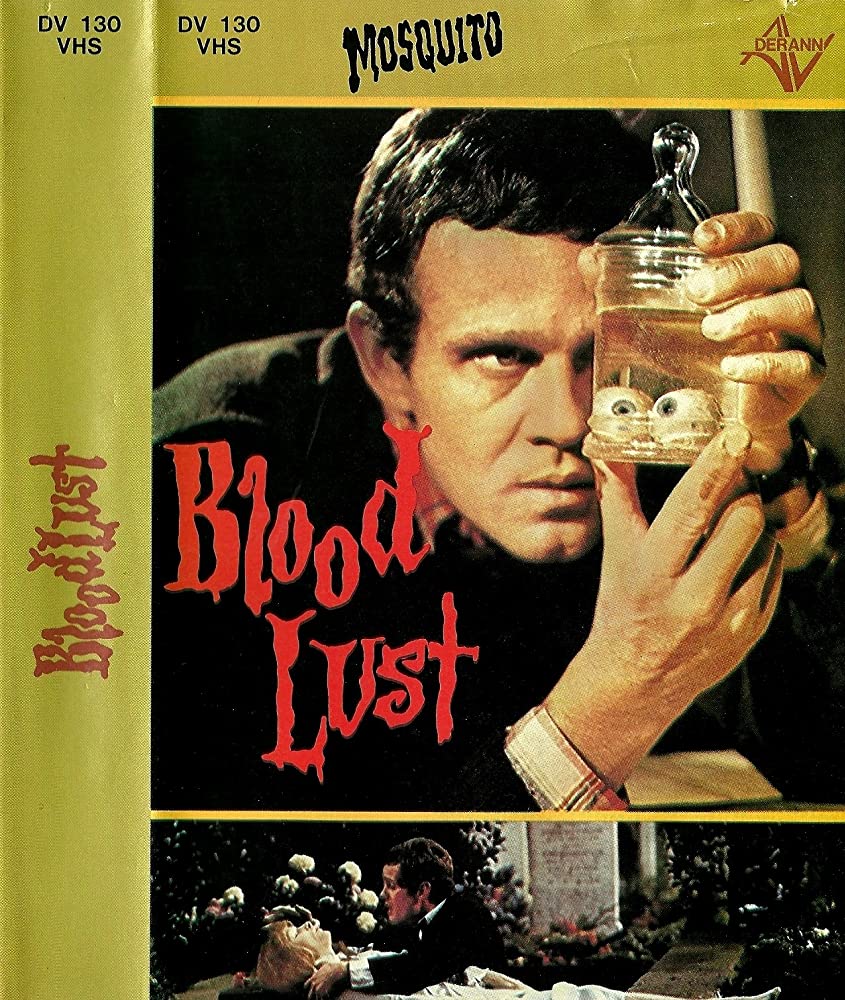
Released in Germany as Mosquito der Schänder, (Mosquito the Rapist), this grim late-70s film focuses on a deaf-mute adult accountant who endured savage bullying for his affliction throughout his youth—after he became deaf from a savage beating by his father. He begins collecting puppets and graduates to raping and mutilating female corpses in a morgue. He moves on to sucking corpses’ blood out their necks using a glass straw. Then, when his secret female crush (the girl next door) dies in an accident, he begins to kill. Elements of the film are based on the true story of Kuno Hofmann, the “Vampire of Nuremberg.” A reviewer on IMDb called it “One of the most perverse horror films ever made.”
Lady Dracula (1977)

A horror-comedy movie from West Germany directed by Franz Joseph Gottlieb, Lady Dracula stars Evelyn Kraft in the title role, whose official name is Countess Barbara von Weidenborn. A young girl living in the late 1800s, she is kidnapped and killed by Count Dracula, who is chased down by a mob and murdered with a stake. A hundred years later, Countess Barbara’s coffin is stolen and sold to an antiques dealer. She rises from her coffin overnight and kills the dealer. After drinking his blood, she transforms into a beautiful adult female. She finds a job—and plenty of blood to suck—at a funeral home. An Austrian police inspector who is investigating the funeral home starts to fall in love with Barbara. His feelings are reciprocated, and the last scene shows her pulling him into the coffin, which begins rhythmically rocking after the lid closes.
Angst (1983)

Banned throughout Europe for its graphic and unrelenting violence, Angst traces the path of a recently paroled serial killer who is still driven by an intense desire to see fear in his victims’ eyes. He breaks into a house, strangles the mother, drowns the son in the bathtub, and stabs the daughter to death. He then drinks her blood and vomits it back up. Seeking to scare other people by flaunting his victims, the stuffs the dead family’s corpses into his car trunk and heads to a local diner. When police show up and arrest him, he proudly displays the bodies. A voiceover at the end explains that the killer saw his acts as revenge for a troubled childhood. French director Gaspar Noé (Irreversible) has said that Angst was a direct influence on his style. The film was loosely based on real-life Austrian mass murderer Werner Kniese and includes quotes from German serial killer Peter Kurten, the “Vampire of Dusseldorf.”
NEKRomantik (1987)
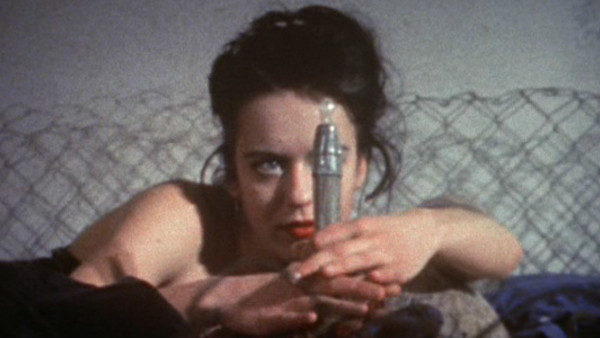
The pinnacle of the German underground horror movement—which emerged in the mid-1980s and distinguished by near-unbelievable amounts of rape, violence, and necrophilia—NEKRomantik, written and directed by Jörg Buttgereit, was released in 1987. Two years later, a German underground horror movie called Violent Shit was made for only $2,000 and released directly to video. The German government banned both. But the attendant publicity actually encouraged more films from the German underground, and one director—Uwe Boll—went onto mainstream success by continuing to churn out underground horror films all the way up to 2017. NEKRomantik’s plot involves Rob Schmadtke, who works for a cleaning agency that cleans up bodies after traffic accidents. The cleaning agency’s logo is a Totenkopf—a skull-and-crossbone design often used by the Nazis—inside a pentagram. Rob shares his apartment with his girlfriend Betty, along with several jars containing human parts preserved in formaldehyde. In the end, Rob stabs himself to death while ejaculating. John Waters called the film “The first ever erotic film for necrophiliacs.” In 1991, Nekromantik 2: Die Rückkehr der Liebenden Toten (The Return of the Loving Dead), was seized by authorities only 12 days after its release—a move that German officials hadn’t made since the Nazi era.
Laurin (1989)
This film is a Hungarian/West German collaboration made shortly before the Berlin Wall fell. The dialogue is in German, but the entire cast consists of Hungarian actors. In a small Bavarian harbor town during the 1800s, children go missing one by one. A young girl named Laurin becomes haunted by visions. In her dreams, the murderer lives in a mansion along with a black dog, and every window of the mansion shows a different kid clawing at the windows and attempting to escape. Laurin’s mother had died after witnessing someone trying to dispose of a young boy’s body. She lives alone with her grandmother, as her father’s job requires him to be off at sea for extended stretches. As the kids at her school slowly go missing, she wanders around her village looking for clues. But in attempting to save the others, Laurin becomes endangered herself. Reviewers have referred to the film’s style as “haunting,” “surreal,” and “atmospheric.”
Amoklauf (1994)

This is the third film by writer/director Uwe Boll. It focuses on a maladjusted, socially isolated—and unnamed—waiter who spends most of his time alone in his bleakly decorated apartment watching gory documentaries and TV game shows, especially The Price Is Right. One night after watching a couple of patrons vivisect a fish he’d dutifully removed from one of the restaurant aquariums at his request, he burns a photo of his mother, which leads to a flashback where he murdered his own father while Dad was watching The Price is Right. The next morning brings a round of drinking and masturbation—the latter of which is interrupted by a female neighbor, whom he stabs to death. He continues to drink and masturbate next to her corpse. After another flashback of another potential murder he’d committed but had suppressed, he goes to a public park and shoots eight people, only to be stabbed by one of his victims. Amoklauf introduced what would become tropes in Boll’s later movies—mass shootings and maladjusted, violent men who are alienated by the system. Boll said the film was similar to his later movie Rampage, but without the “fun.”
Funny Games (1997)

Written and directed by Michael Haneke, Funny Games (also the film’s German title, although the dialogue is in German) centers around a family that rents a lakeside house for a summer vacation, only to be relentlessly tormented psychologically—and then tortured physically—by a pair of sadistic killers who live nearby and invade every inch of their private life. The film that draws the most frequent comparison to Funny Games is Stanley Kubrick’s A Clockwork Orange (1971). The director says he doesn’t consider the film a horror movie so much as a comment on the effect of media violence on society. In 2007, Haneke remade Funny Games in English with an American cast.
Mutation (1999)
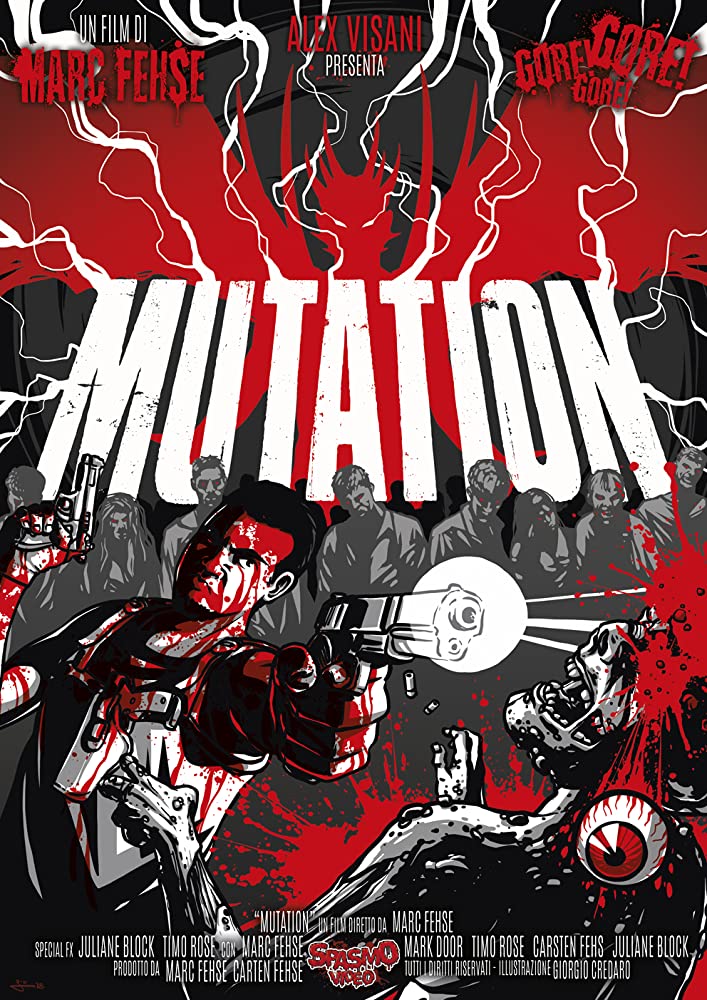
A chemical that was created in Nazi Germany that was intended to create a race of Supermen somehow gets unleashed again in 1999, leading to all kinds of chaos and bloodshed. The film’s beginning is a pseudo-documentary about the chemical’s original development, then when it gets unleashed more than 50 years after World War II ended, it leads to the dramatic part—zombies, exploded heads, gratuitous disembowelment, and the end of the world. According to a review at The Last Exit, the good part is “a larger scope than usual and some creative cinematography,” while the bad part is the film’s “extremely confusing mess of a plot-line, no proper characters to speak of, [and] bad special effects for some blood splatter scenes.” Mutation was also released as K7B Mutation.
Night of the Vampire Hunter (2000)

Released as Nachtschatten (Night Shade) in Germany and filmed on an extremely low budget by writer/director Ulli Bujard, this hard-to-find film tells the story of fiction writer Jens Feldner (Stefan Kaseberg), who writes horror fiction under the pseudonym Henry Gloom. Jens’s girlfriend is a vampire hunter, and he uses some of her stories for inspiration. But he doesn’t realize she’s also a vampire, seeking vengeance against the Master Vampire who first bit her centuries ago. Night Shade features lots of blood, sprinkled with flashes of ironic humor.
Tattoo (2002)

Two detectives—one a veteran and one a rookie—are hunting for a serial killer who murders people that have tattoos and then skins the tattoos off them. One victim is a woman who was killed as she wandered naked into traffic—the skin from her back, which was covered in tattoos, was stripped bare. But they they find a finger in the woman’s stomach. It’s the finger of a man who’d previously been convicted of rape and assault. When they raid the man’s basement, they find a table covered in blood and bits of human flesh. They also find bodies buried in his garden. In their quest for the killer, the detectives are forced to confront some uncomfortable facts about themselves. The New York Times called Tattoo a “grim, disquieting mood piece,” while The New York Post dubbed it “A blood-freezing German thriller, a very stylish variation on The Silence of the Lambs and Se7en.”
Garden of Love (2003)
Written and directed by long-time German underground horror director Olaf Ittenbach, Garden of Love—also released as The Haunting of Rebecca Verlaine—is an intensely gory film involving a young girl named Rebecca (Anika Julien), who is the sole survivor in a commune that gets slaughtered in the opening sequence. After emerging from a two-year coma, she begins having flashbacks about the murder, which leads her back to the house where they happened. It turns out that the spirits of her dead commune members are still there, and they implore Rebecca to find the murderers and bring them back to the house, too. The film features disembowelment, dismemberment, slit throats, and crushed heads. According to The Last Exit, “The splatter centerpiece is a wild massacre of policemen who get their heads smashed like oranges, ripped apart, decapitated, crushed and their faces ripped off, but the rest of the movie unfortunately consists of mostly dialog, cheesy mystery and ghosts.”
Antibodies (2005)
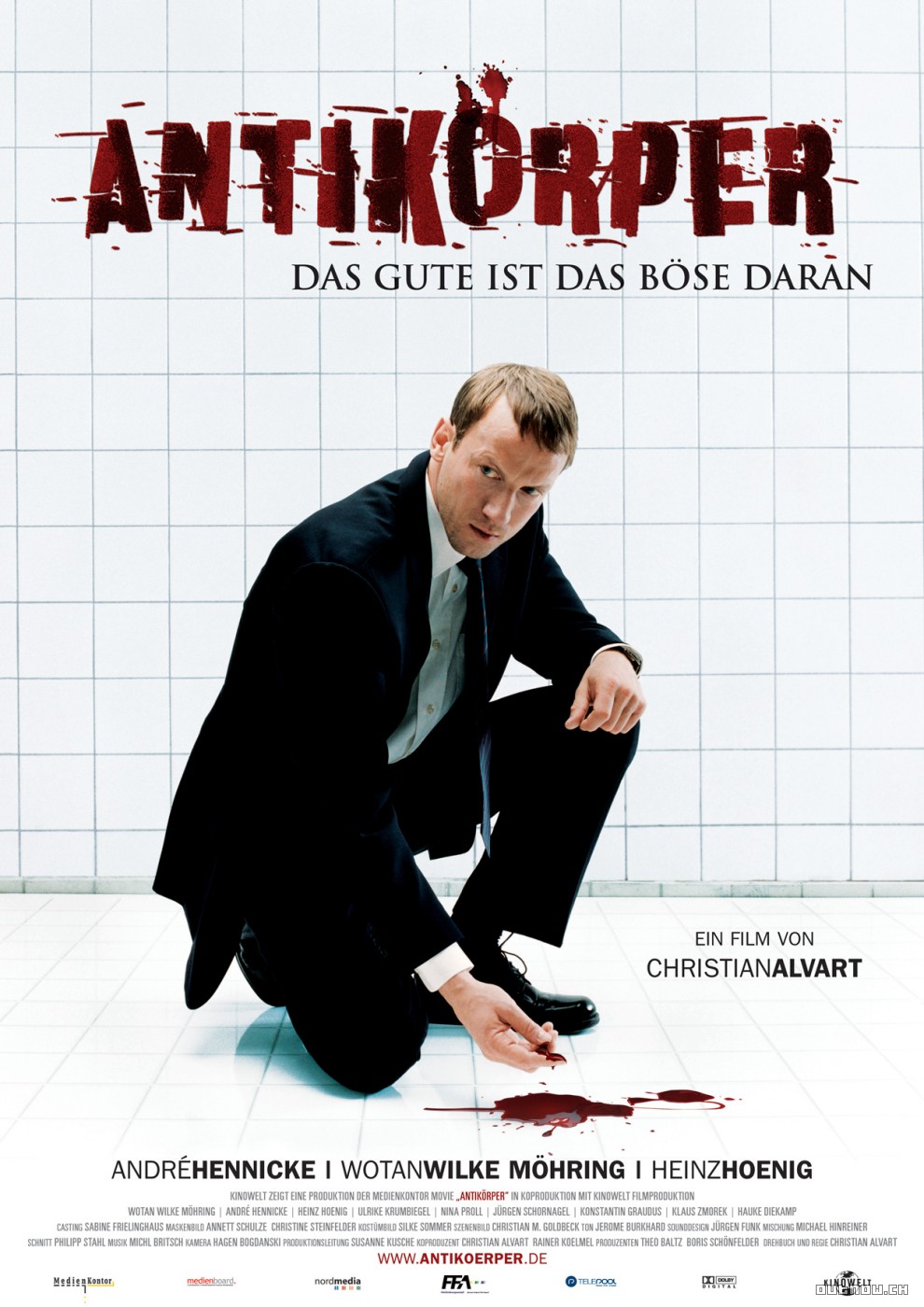
Antibodies (German: Antikörper) relates the sick saga of Gabriel Engel (Andre Hennicke), a pedophilic serial killer who kills 13 boys and makes religious paintings with their blood—which, minus the pedophile angle, is a direct ripoff of the plot of 1965 American slasher classic Color Me Blood Red. Before he can be brought to justice, Engel swallows poison and kills himself. The film employs the horror trope of “detective gets involved and realizes some dark things about himself.” A review at Filmstalker compares it to The Silence of the Lambs and calls it “strong, suspenseful and the closing fifteen or so minutes are probably the most suspenseful and exciting I’ve watched in a long, long time” Norman Reedus of The Walking Dead fame appears in a cameo as a police officer.
Dead in 3 Days (2006)
In Dead in 3 Days (In 3 Tagen bist du tot), five high-school students who are celebrating their graduation suddenly all get the same text message: “In 3 days you’re dead!” They all brush it off until one of them is found dead at the bottom of a lake. The killer then captures a girl from the group, who is temporarily saved by a male friend, but the killer stabs him to death. Then another member gets decapitated. As the remaining members frantically try to investigate, it is revealed that the killer is the mother of a boy who died three days after he fell through the ice in a frozen lake. She committed the murders using a mask fashioned from the skin of her dead husband’s face. One of the girls survives at the end in yet another iteration of the “last girl” horror-movie trope. Bloody Disgusting called the film “a slick, well shot, and engaging slasher, with little to no pretense or attempts at ‘modernizing’ the slasher template. Sometimes it’s nice to see a slasher that’s just a slasher movie.” A sequel, Dead in 3 Days II, was released in 2008.
Slasher (2007)
A group of students takes a break from the rigors of school for a brief camping vacation, only to be chased through the backwoods by a deformed freak named “Mike” who has already murdered at least four girls. The film involves torture, a head being crushed in a vise, an axe murder, and eyes being gouged out with pruning shears. It turns out that Mike’s older sister Erin—who is also his lover—set the fire that originally caused Mike’s disfigurement and rage. She winds up killing her brother by tying a rope around his neck and snapping it. In the end, the “last girl” wins. Slasher was made on a budget of only $15,000. MOVIES and MANIA panned it: “Neither scary nor entertaining, Slasher is a typical example of non-Americans trying to make a sloppy American horror film replica without having the requisite domestic sordidness to back up the effort.”
We Are the Night (2010)
Said to be inspired by the writings of Valerie Solanas, who shot Andy Warhol and tried to organize a radical feminist group in the 1960s called SCUM (Society for Cutting Up Men), We Are the Night (Wir Sind Die Nacht) focuses on a group of lesbian vampires who seek murderous vengeance against males. The 2011 German Film Awards nominated Wir Sind Die Nacht for Best Film Score and Best Editing. Film Monthly called it “an edgy tale of a provocative gang of female vampires living large, making their own rules and leaving a merciless trail of blood.”
Welk (2011)
In this 21-minute short film named after a German word that means “withered” in English, a retired couple named Lydia and Winifred—who, despite the name, is a male—start the day by arguing. Trying to escape the suffocating household tension, Winifred takes a nature walk while Lydia stays and home and tries to unwind by smoking some weed. Winifred starts collecting flowers and then accidentally “collects” an unconscious woman in the forest. According to director Daniel Vogelmann’s website, “He brings her home to Lydia – not knowing that she is everything but human.” An IMDb reviewer calls the movie “a beautiful, nuanced indie horror from Germany,” adding that “The ambiguity is part of the beauty of it, and part of what sets this German-made film apart from many other ‘indie’ horror works, along with the gorgeous lush green forest cinematography.” The film was also released as Wilt.
Therapy for a Vampire (2014)
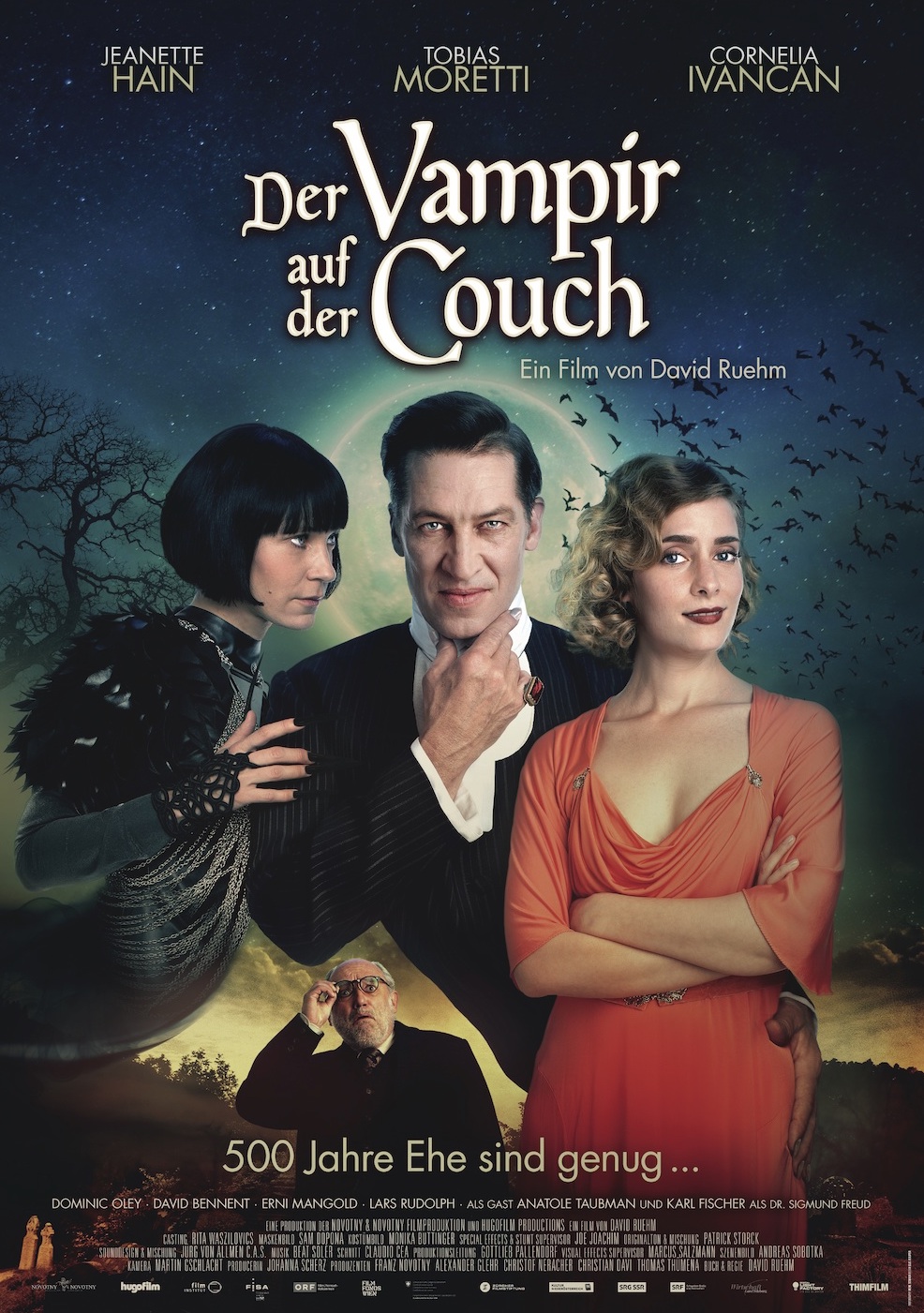
An Austrian comedy/horror movie set in Vienna in 1932, where Sigmund Freud provides therapy for a “depressed vampire” named Count Geza Von Kösznöm, who laments his 500-year marriage to a female vampire who can’t stand looking at herself in the mirror. Freud says he can get his assistant to paint a portrait of the Countess so that she can see what she looks like, anyway. Spells are cast, blood transfusions are performed, necks are bitten, a bat flies away, and a vampire kills herself by dragging a wooden stake into her own heart. Therapy for a Vampire (Der Vampir auf der Couch) received nominations at the Austrian Film awards for best makeup, costume, and male actor in a supporting role. Critic Rex Reed slammed the film, saying “It aims to be laugh-out-loud hilarious but never rises above a few wan chuckles.”
Goodnight Mommy (2014)
After undergoing extensive plastic surgery that leaves her entire head wrapped except for her mouth and eyes, a woman returns to her lakeside home and her nine-year old German twins, Elias and Lukas (Elias and Lukas Schwarz). Two hundred and forty pairs of twins reportedly auditioned for the role.

The twins, who keep a pair of giant hissing Madagascar roaches as pets, get a queasy feeling about their mother’s appearance and notice that she’s been acting different ever since her operation—almost as if she isn’t their mother at all. Then they see a picture showing their mother with another woman who looks almost identical to her, and they begin to suspect that their “mother” is actually the imposter. They tie the woman to bedposts and burn her face with a magnifying glass, then seal her mouth shut with tape. She winds up persuading Elias that Lukas is dead and only exists as a hallucination. Elias burns her to death. Two hundred and forty pairs of twins reportedly auditioned for the role. The Austin Chronicle called the film “disturbing” and advised that “you may want to refill your Xanax prescription prior to seeing this one.” Goodnight Mommy (Ich seh, Ich seh, AKA I See, I See) was selected as Austria’s entry for Best Foreign Language Film at the Academy Awards.
True Love Ways (2014)

A beautiful young woman named Séverine is plagued by a recurring dream that makes her doubt the authenticity of her relationship with her boyfriend Tom. She also has the feeling that she’s being watched. She tells Tom she needs to get away for a few days for a sea cruise, which sends Tom into a depression. Drunk at a bar, Tom tells a stranger about his woes. The stranger comes up with a plan: Have someone attack Séverine while she’s out at sea, and then out of nowhere Tom rushes in to save her, resolving all her doubts and making him a heroic knight in shining armor.
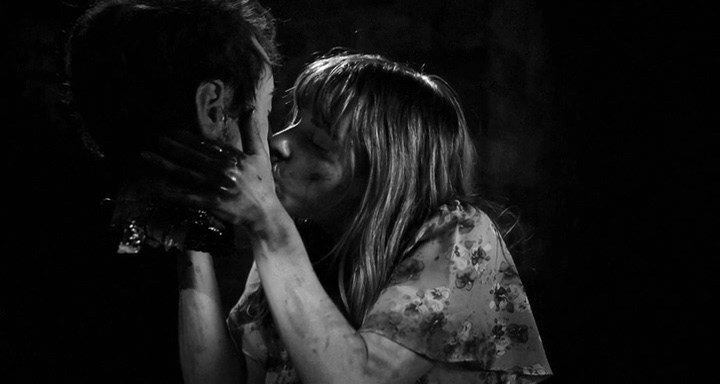
But this stranger is not who he appears to be, for he has sinister motives regarding Séverine. According to an English translation of the German promotional copy, “As Séverine fights for her life, a morbid game of fear, unfulfilled desires, longings and the search for true love begins.” Horror Freak News gave True Love Ways (Wahre Liebeswege) a rave review: “Every so often you watch something so intriguing, so emotional, contemporary yet instantly timeless, that it reminds you why you fell in love with movies in the first place.”
Die Präsenz (2015)
Die Präsenz (The Presence) was inspired by an event known as “Rosenheim Poltergeist” alleged to have occurred in southern Bavaria in 1967 where over the course of two weekends several strange phenomena occurred in a parapsychologist’s offices. It was shot on location in an allegedly haunted German castle that was built in the 1300s. There were rumors that all sorts of paranormal phenomena occurred during the first few days of filming. The plot: Markus, his girlfriend Rebecca, and their friend Lukas visit an allegedly haunted castle. Only one will emerge alive. Since it uses the same faux documentary found footage style as The Blair Witch Project, the film has often been called a blatant ripoff of the former. Still, Blood Good Horror compared it favorably to Blair Witch: “There are definitely some unsettling scenes, and the tension builds nicely.”
Der Bunker (2015)

An unnamed graduate student (Pit Bukowski) rents a room with no windows in an odd, bunker-style home deep in the woods that eventually becomes snowed-in. His eccentric landlords insist that he tutor their son, whom the parents expect to eventually become the President of the United States. Their son appears to be around 30, although they insist he’s only eight. There’s no gore, and the horror is mostly derived from the absurdity and inappropriateness—for example, one scene shows the grad student nursing on the mother’s breast. The mother also believes an alien lives inside her leg. The student and the family are the only four people who appear in the movie. The Hollywood Reporter called Der Bunker (The Bunker) “Twisted and trashy in equal measure,” adding that it’s “The best German-language movie featuring a talking leg, ever.”
HomeSick (2015)
A talented cello student named Jessica (Esther Maria Peach) is invited to compete in an international contest. She’s elated, but also anxious. After she and her husband move into a new apartment building, she starts getting paranoid that her neighbors are gang-stalking her. As the stress slowly starts to pick away at her mental and physical health, she finds it impossible to distinguish between fantasy and reality; it’s also impossible for the audience to tell. The Movie Waffler gave it a mixed review, saying that Jessica’s character recalls tragic real-life females such as Virginia Woolf and Sylvia Plath, adding that the film’s first half was captivating, but the second half was a disappointment. Homesick (Heimweh) was released in America with English subtitles.
German Angst (2015)

This film is actually three short movies all set in Berlin and made by German horror auteurs Jörg Buttgereit (Final Girl), Michal Kosakowski (Make a Wish), and Andreas Marschall (Alraune). Final Girl, the only one entirely spoken in German (the other two are mostly in English), involves the weird relationship between a girl and her guinea pig. Make a Wish is a violent account of strife between a deaf-mute Polish couple and the thugs who terrorize them. Alraune tells the tale of a man who’s looking for some excitement outside of his relationship and finds more than he bargained for—including broken glass and a fanged sex monster. HorrorBuzz called German Angst (Deutsche Angst) “a mixed bag. Sadly, this bag has a lot of Necco wafers and black licorice you’re going to have to get through to get to the peanut butter cups on the bottom.”
Friend Request (2016)

Although Friend Request (released internationally as Unfriend) is in English, it takes place in Germany and was made by a German director, so we included it in this list. Laura (Alycia Debnam-Carey) is a popular girl active on Facebook. She accepts a friend request from a strange classmate named Marina and is originally intrigued until the girl’s behavior gets too obsessive, causing her to lie about where he’s heading one night. When Marina finds out about the lie, she feels betrayed and attacks Laura at school, then films herself committing suicide. The suicide clip gets shared all over Facebook. In the end, Laura ends up just like Marina. Shot in Cape Town, South Africa, the film was released as Unfriend everywhere but in America, where the title was changed to avoid confusion with Unfriended. Critical response was largely negative, with Rotten Tomatoes’ consensus opinion being that “Friend Request‘s attempts to update old-school teen horror for the digital age do not, sadly, include memorable characters, fresh scares, or novel storytelling twists.” Facebook’s Mark Zuckerberg condemned the film and tried getting it banned from theaters.
Hagazussa: A Heathen’s Curse (2017)

The German title for the film was simply Hagazussa, which was an Old High German term meaning “witch.” The film is set in a remote village in the Bavarian Alps in the 1400s. A girl named Albrun (Aleksandra Cwen) lives with her goat-herding mother and gets shunned by from other children her age during a sledding expedition.
Her mother comes to take her home and reassures her that everything will be OK. Instead, that night a group of men dressed in goatskins bang on their door and call them witches who deserve being burned at the stake. Her mother’s deteriorating health renders her unable to prevent Albrun from getting raped. One night her mother runs out alone into the winter cold and winds up dead in the morning, snakes crawling all over her. Fifteen years later, Albrun still lives in the same cottage with her own infant daughter. She continues being harassed by townspeople. One day in the woods, she eats a mushroom, unaware of its psychedelic properties. She wades into a pond with her infant daughter, who drowns. She takes the baby’s corpse home, drops it into a vat of boiling soup, and bites into its flesh, causing her to vomit. In the final scene, Albrun spontaneously combusts while silhouetted above a mountaintop at sunrise.
Ever After (2018)
Zombies have taken over the earth two years after a viral pandemic, leaving the only two German cities—Weimar and Jena—controlled by humans. A suicidal girl named Vivi (Gro Swantje Kohlhof) is wracked with guilt that she survived, because her sister died and she didn’t. Seeking to flee the relative hardships of Weimar for the much safer Jena, she meets Eva (Maja Lehrer) on a train. But the train breaks down, forcing them to make the rest of the journey on foot through zombie country. They pass through abandoned castles and razor wire and flee from mobs of rampaging zombies. Directed by Swedish filmmaker Carolina Hellsgard, Even After (Endzeit) was praised by Variety as “An enjoyably grim fairy tale that injects fresh life into the undead genre.”
More German Horror Movies
- Premutos: The Fallen Angel (1997) – Also titled Premutos: Lord of the Living Dead, this German splatter movie is about a young man who has visions of being the son of a fallen angel.
- Dawn Breaks Behind the Eyes (2021) – A couple in a failing marriage spends the night in a castle where the laws of time and space have little meaning.
- Old People (2022) – Elderly people from a nursing home are compelled by a spirit to rise up and strike back at the people who mistreated them (and everyone else).
